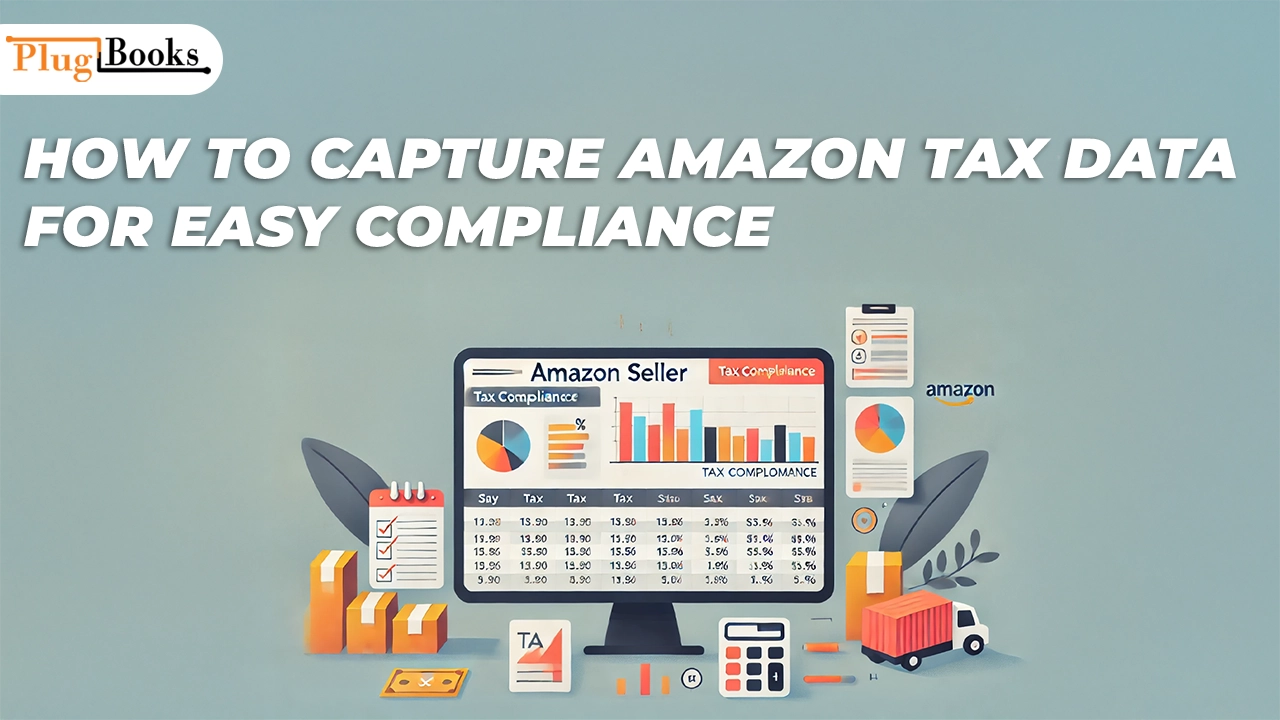Although selling on Amazon presents an interesting financial prospect, it also carries some responsibility—that of tax management. Keeping track of tax data across several states and regions might feel like a minefield, regardless of your level of experience selling—especially when tax regulations are continually changing.
Why then is it so vital to capture Amazon tax data? Staying compliance with tax rules is crucial, hence a major component of that is ensuring accuracy of your tax data. I will walk you through the process of gathering Amazon tax data in this tutorial, explain why it is so important for your company, and show you how to greatly simplify the whole process with the correct tools. With some knowledge, tax season won’t be almost as taxing and you’ll be able to concentrate on expansion of your company.
What Exactly is Amazon Tax Data?
Let’s deconstruct what we mean by Amazon tax data before diving into the how-to. This relates to the sales tax Amazon gathers on your behalf upon consumer purchase. States where Amazon has a sales tax nexus—a legal presence—they immediately pick up sales tax for you. They forward the money then to the relevant tax authorities.
Still, you are in charge of knowing and documenting that tax information. Particularly if Amazon missed any transactions or if you have to pay taxes in states where Amazon does not operate, you must ensure you are providing all the correct figures. Regularly capture Amazon tax data, review it, and tracking any changes is so vital.
A Methodical Guide to capture Amazon Tax Data
Data capture of Amazon taxes need not be frightening. Staying on top of things is lot easier once you reduce it down into a few steps. Let’s begin the process:
First: Get your Amazon Seller Account Reports.
Log on first using your Amazon Seller Central account. From here, your sales tax records will be accessible, providing all the information regarding the taxes Amazon has already paid for you.
One can locate them as follows:
- Enter using your Amazon Seller Central login.
- See Reports on the top menu.
- Under the section on Fulfilment, choose the Tax Document Library.
- Search for the transactions Tax Report; this will display all of the taxes gathered on your transactions.
Second step: Is to Get Your Sales Tax Report Downloaded.
Get the Sales Tax Report downloaded to your PC after locating it. This paper will go over, state-by-state, how much tax Amazon has gathered for every order. It’s a terrific approach to find out in every area where your tax responsibilities stand.
Third step: Examine Amazon’s collected taxes.
Let us now examine the data closer. In states where Amazon either physically or economically resides, it automatically gathers taxes. Not every state is covered, though, and certain sales might not have the correct tax collected. Look for any differences between what Amazon gathered and what you really owe as you check over your report. If you find any errors, note them; you might have to report and pay the taxes yourself in some of those states.
Step 4: Track Tax Exemptions and Corrections.
Certain times you might have specified items free from taxes or tax-exempt clients. Amazon allows you to track these exemptions; so, it’s crucial to confirm that they are used correctly. Also be sure you monitor any corrections or returns. These will influence your overall tax due; Amazon will amend its records to show any changes.
Automating Amazon Tax Data Capture Methodology
Manual handling of a lot of transactions can soon become exhausting. The encouraging news is that tools for automation can assist. Tools like PlugBooks let you automatically gather Amazon tax data and integrate it with your accounting program. Consequently, you can:
Real-time automatically grab Amazon’s tax data
Create accurate tax reports without hand data entry. For more seamless tax reporting, match your preferred accounting program with your tax data. Automating these chores will save time and help to lower the possibility of mistakes resulting from manual tracking.
Using Amazon Tax Data to File Accurate Taxes

It’s time to use your Amazon tax data after you have it gathered. The information will clarify your sales tax responsibilities and guide your tax filing to the correct authorities. Here’s how to maximize it:
1. State Sales Tax
Your sales tax report will show the tax Amazon has paid state by state. Filging your sales tax returns depends on this since you will have to record the collected amount in every state. For instance, you would have to submit Amazon’s sales tax collecting for California to the California Department of Tax and Fee Administration.
2. Examining Returns and Corrective Actions
Remember to look for any returns or corrections; these could affect your tax due. Before you submit, be sure your report shows these revisions.
3. File Your Taxes
You’re ready to file your taxes once you have verified everything matches and double-checked your records. Your state may require you to file annually, quarterly, or monthly. Make sure you are reporting the proper amount of tax in every state by using Amazon’s report data.
States where Amazon does not collect sales tax will have you handle that yourself. Since tax regulations differ greatly, one must keep current with each state’s needs.
Typical Mistakes to Avoid While Gathering Amazon Tax Information
While compiling Amazon tax data is really simple, there are a few typical errors that could trip you. The following should help you to be alert:
1. Not Maintaining thorough records
Businesses are obliged by tax authorities to retain comprehensive records of all transactions and tax-related documentation. Ignoring this could lead to headaches should you be audited. Make sure your Amazon tax data is safely kept; ideally, it should be kept in a cloud-based system from which you may readily access it as needed.
2. Denying State Nexus Changes
State tax regulations vary often, and based on new laws, nexus criteria might also change. For tax collecting, for instance, some governments might change their levels; others might create new laws for remote vendors. Monitoring these developments will allow you to make sure you never overlook any payments.
3. Dependent just on reports from Amazon.
Although Amazon’s tax records are quite useful, they often lack every detail. Amazon might not collect tax on particular items or miss some exemptions, for instance. Cross-checking the facts with your own records will help you to ensure that everything is in order.
In order to file taxes stress-free, capture Amazon tax data.
For any vendor trying to remain tax legislation compliance, one of the most crucial chores is gathering Amazon tax data. Regular evaluation of your reports and application of automation solutions to expedite the process can help you to minimize tax season stress and prevent expensive mistakes.
Whether you manage the process manually or using an automation solution like PlugBooks, with the correct strategy you will be on top of your tax responsibilities in no time. Following the advice in this tutorial will help your Amazon company to run without tax implications.
See our other tax management and accounting pieces for extra advice on running your Amazon company. Keep ahead of your taxes and concentrate on what really counts—business expansion!
About PlugBooks
PlugBooks seamlessly syncs with your Amazon Seller account to collect real-time sales information. It then organizes the data by state, ensuring accurate and timely reporting. With PlugBooks, you can eliminate the hassle of manual data entry, reduce the risk of errors, and ensure that your data is always up to date, saving you time and stress. Whether you’re managing a few orders or thousands, PlugBooks helps streamline your entire reporting process.




